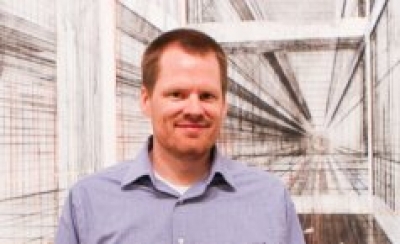
23 March 2015 12:02PM
The Department of Economics this week is hosting a two-day recruiting event for nearly 30 admitted doctoral program applicants. The campus visit is designed to give prospective students a glimpse of life as an economics Ph.D. candidate at Duke, as well as introduce them to potential faculty mentors. For some of these visitors, making the decision to come to Duke will shape the rest of their careers.
Alumnus Peter Landry (Ph.D. ’13) openly admits that he had no idea what he was getting himself into when he began his Ph.D., but he credits the Duke Economics program with providing “an excellent foundation for a research career.” Since graduating, Landry has worked as a postdoctoral scholar at the California Institute of Technology (Caltech) and is currently an assistant professor of marketing at the University of Toronto (UToronto).
Duke Economics caught up with the Michigan native to see what he’s been up to these last two years.
How did you develop an interest in economics, and why did you decide to come to Duke for your Ph.D.?
For undergrad, I attended the University of Michigan, where I majored in physics. Between undergrad and grad school, I worked in the Washington, D.C. area for a couple years, most recently at a consulting firm that dealt with energy and environmental policy. About a year after undergrad, I decided it would be a good idea to figure out what I wanted to do with my life. I didn’t have much background in economics, but I always liked math and was also interested in public policy, so an economics Ph.D. was an intriguing option. I picked Duke because I knew it was a great school with a great economics department. It turned out to be an excellent decision!
Can you elaborate on that?
The Duke Economics program provides an excellent foundation for a research career. The advising was excellent. Philipp Sadowski was my advisor and a ridiculously good one, despite the fact that I was his first advisee. He consistently provided extremely useful feedback on my research, helped me get unstuck when I wasn’t sure what to do next, and kept me pointed in the right direction. Meanwhile, Attila Ambrus was the best unofficial co-advisor I could have asked for as well as my hero on the job market. If it weren’t for Attila, I wouldn’t have even known about the opportunities at Caltech and at UToronto. All of the classes were intellectually stimulating and also very useful for research. Sometimes first-year students wonder why they have to take courses outside their desired field, but I continue to draw on methods (far more often than I would have expected) that I learned in my first-year econometrics and macroeconomics courses.
What did you focus on during your time here?
I started out in empirical microeconomics but wound up in microeconomic theory, where I focused on topics in behavioral economics. My job market paper was a model of “bad habits.” Philipp made it clear that I needed to focus on a more specific behavior, so I ended up spending a ton of time researching cigarette addiction while trying to link the model to evidence on smoking. I had the opportunity to learn about addiction from many different angles during my time at Duke, including the neuroscience of addiction, which helped a lot with the transition from Duke economics Ph.D. to a neuroeconomic postdoctoral position at Caltech.
One of your current research areas delves into the field of neuroeconomics. Can you please explain what that is?
Neuroeconomics is a relatively new field that draws on neuroscience research to shed light on economic behavior. In practice, neuroeconomic research can take multiple forms. One common approach involves the use of neuroimaging methods to understand what goes on in the brain when people make choices. At Caltech, I pursued a less hands-on and more theoretical approach that involves modeling behavior using the tools of microeconomic theory while tying in concepts from neuroscience (with the goal of giving the model a plausible biological foundation). Following this approach, a neuroeconomic model may look and feel like something you’d encounter in traditional economic theory, except the variables and parameters are related to measures of what’s happening in the brain.
What is your research approach?
I try to come up with models to explain everyday behaviors that are “puzzling” in the sense that they are difficult to reconcile with the notion that people make good choices given what they know. Although my research topics — such as substance addiction, mental health conditions (autism and ADHD, in particular), and the evolution of eating preferences — may not seem like things an economist would typically study, the formal tools of economic theory are the foundation for my research. That said, I draw heavily on research from other fields, such as psychology and neuroscience, to help guide me in developing models that can hopefully speak to what we’ve learned from across disciplines.
What do you currently do at UToronto, and how does that fit in with economics?
I’m cross-appointed at UToronto’s business school in downtown Toronto (where most of the research activities happen) and its campus in the suburb of Mississauga (where I teach). My research focuses a lot on behavioral economics with some natural tie-ins to marketing, but overall the research is very similar to what I’d be doing in an economics department.
I teach marketing courses, which is new territory for me. There’s quite a bit of overlap between behavioral economics and marketing, which allows me to squeeze economics into some of the lectures, but I’ve had to learn a lot about marketing on the fly. I guess it goes to show that the learning doesn’t end once you get your Ph.D.!”
Learn more about our Ph.D. program.
Watch Duke Economics Ph.D. students discuss their favorite things about the doctoral program, Duke University, and Durham.